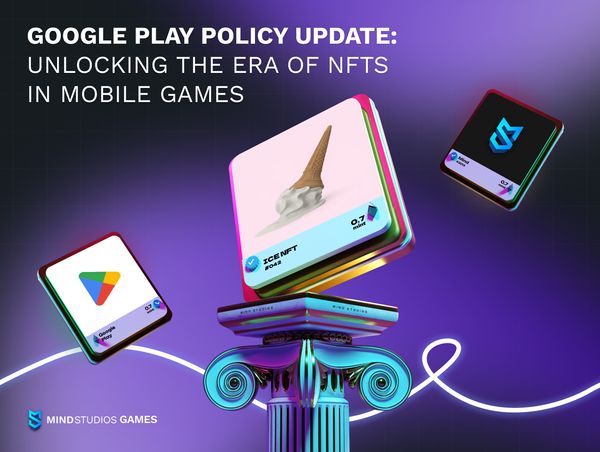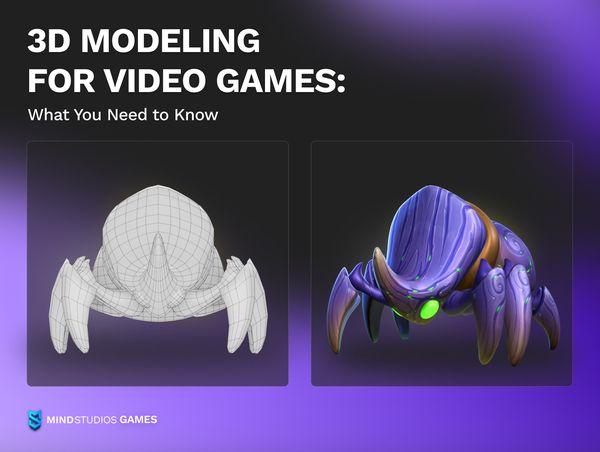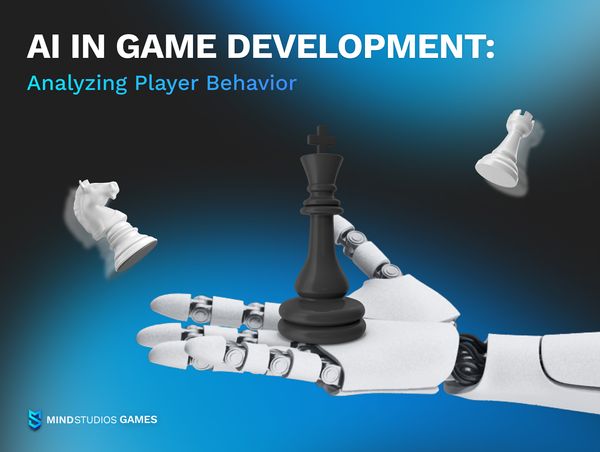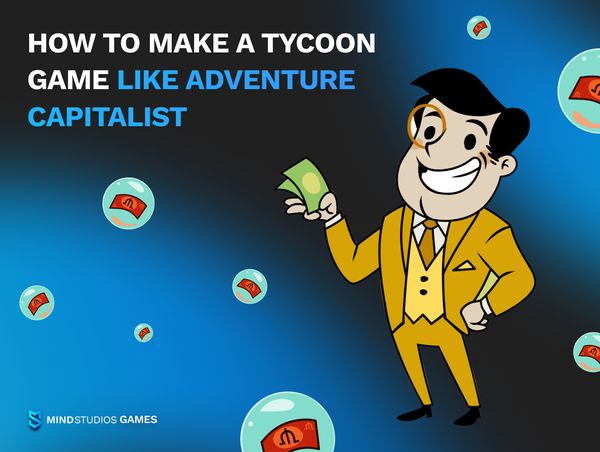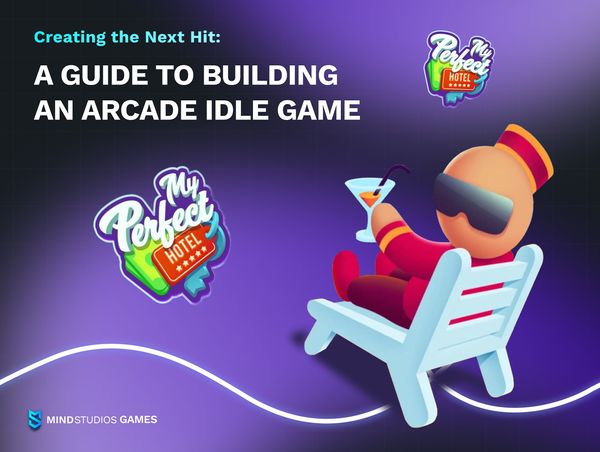
It’s not unusual for games to traverse the borders of genres, creating new blends and flavors to attract more players. So it’s never much of a surprise for us at Mind Studios Games when a new kind of game emerges. When idle arcade games first appeared several years ago, we were excited and jumped into trying them — playing and developing our own. In the latest years, we’ve built a number of titles in this genre as our own products and for outsourcing. You can check out My Fish Shop: Idle Tycoon Game and our other titles in the section below.
And as the idle arcade genre has seen a boom recently with titles like the My Perfect Hotel game and Burger, Please!, we have enough experience to share with anyone interested.
So without further ado, let’s begin.
Overview of arcade idle games
According to a 2020 report by the International Data Corporation (IDC), around 63% of mobile gamers said they played a lot more during pandemic lockdowns, and about 5% of respondents started to play for the first time while on lockdown.
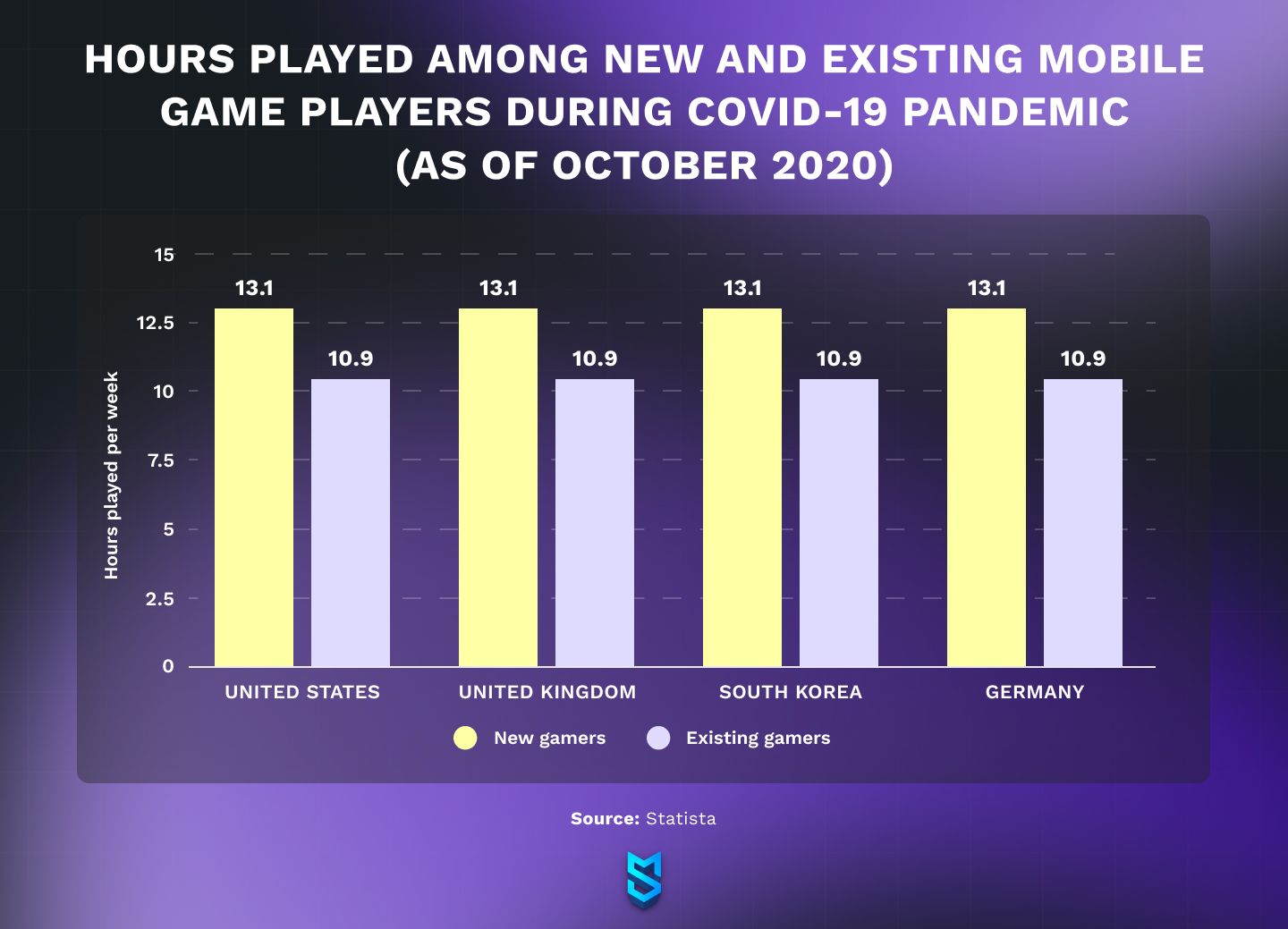
[Source: Statista]
The biggest increase among mobile games was seen in hyper-casual games, a type of games that require active player participation during the session. Idle game developers noticed that and used it to create a new genre, blending idle with hyper-casual and arcade.
The main characteristic of the arcade game genre is its intuitiveness, which translates well into hyper-casual. This addictive intuitiveness of arcade and hyper-casual games got woven into the idle games’ resource aggregation and progression mechanics.
As in idles, there’s passive income accumulation in idle arcade games — as the player develops their establishment, they can “hire” workers to manage the selling and processing. And as in arcades, there’s also a reason to stay in the game for longer sessions, managing everything with an active character. This way, game developers created a genre that combined high retention of idle games with longer gaming sessions of the arcade genre. Win-win!
Why is My Perfect Hotel so popular?
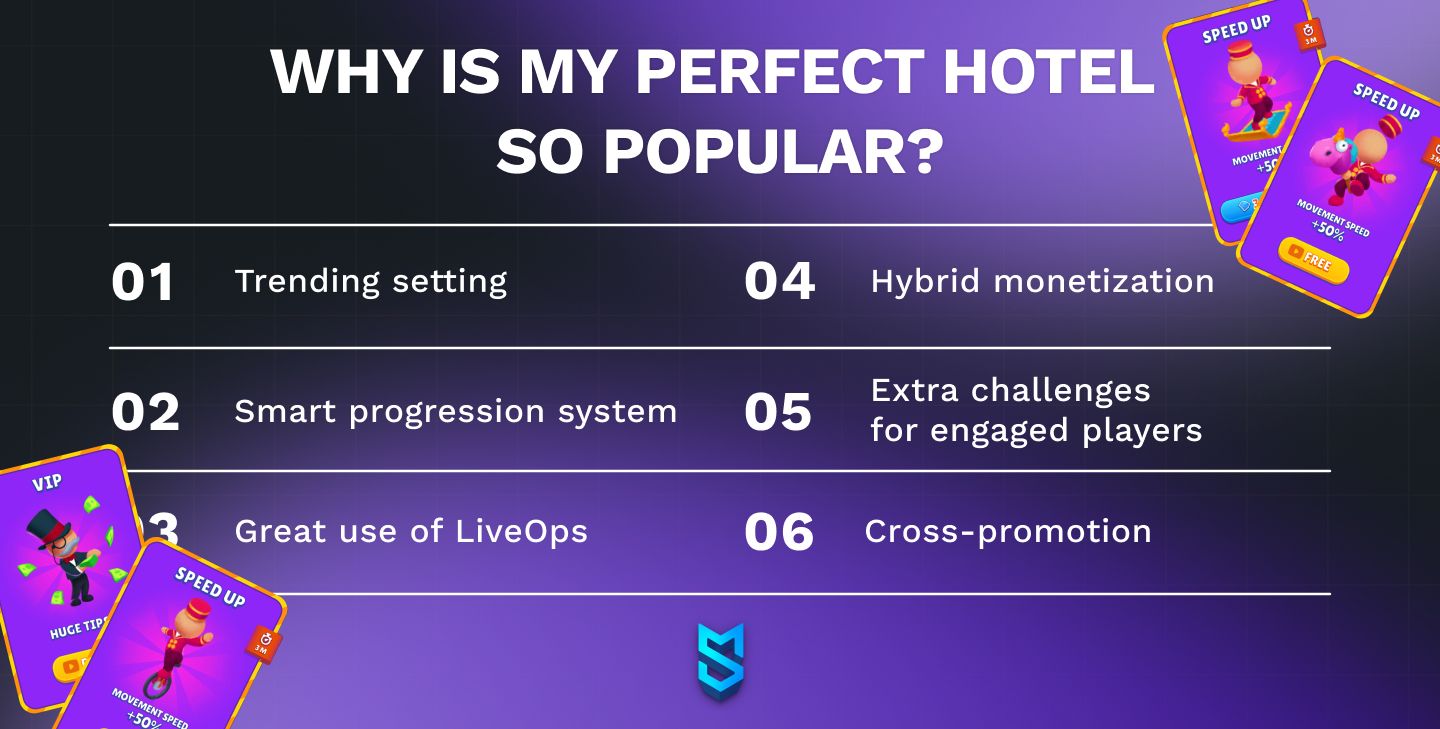
The game that’s been in the top-3 of all arcade idle rating lists, My Perfect Hotel is probably one of the template examples for idle arcade game developers everywhere. Within a year and a half since its launch, this title from SayGames has accumulated over 50m downloads. So what makes it this popular? Here’s our humble take.
Trending setting
A hotel is an interesting setting for players mostly used to gathering natural resources, which is the more widespread theme in the genre. Here, players start off with the intent of doing business and making in-game money. Besides, hotels are a business for the wealthy, and who among us doesn’t want to feel like a celebrity owning a hotel business? Fancy!
Smart progression system
My Perfect Hotel features a well-balanced progression system. Players start with a small building to gradually get used to all the management; as they progress, the challenges get harder and take longer to complete, but they’re never unmanageable. This gives players the feeling that they’ve achieved something, keeps them interested in what’s next, and provides a smooth curve to not take away the fun.
Great use of LiveOps
In online game development, LiveOps — short for Live Operations — is everything developers can change in the game without releasing a full new version of it. In the case of the My Perfect Hotel game, we’re talking about events and challenges that keep players away from boredom.
Hybrid monetization
We’ll talk about this a bit more below, but My Perfect Hotel is perfect (pun intended) when it comes to combining several monetization models. The game has all four of them included: forced interstitial ads players can get rid of by making an in-app purchase, rewarded videos, and even a Hotel Pass — a sort of subscription.
Extra challenges for engaged players
One of the things that set My Perfect Hotel apart from the majority of idle arcade games is the option to complete daily challenges for extra rewards.
Cross-promotion
Finally, there’s no avoiding the fact that SayGames is a publisher of multiple games, some of which are in the same genre. For example, their Dreamdale and My Little Universe have been seeing quite a bit of fame lately, topping the charts. This allows the company to market My Perfect Hotel among players who downloaded their other games.
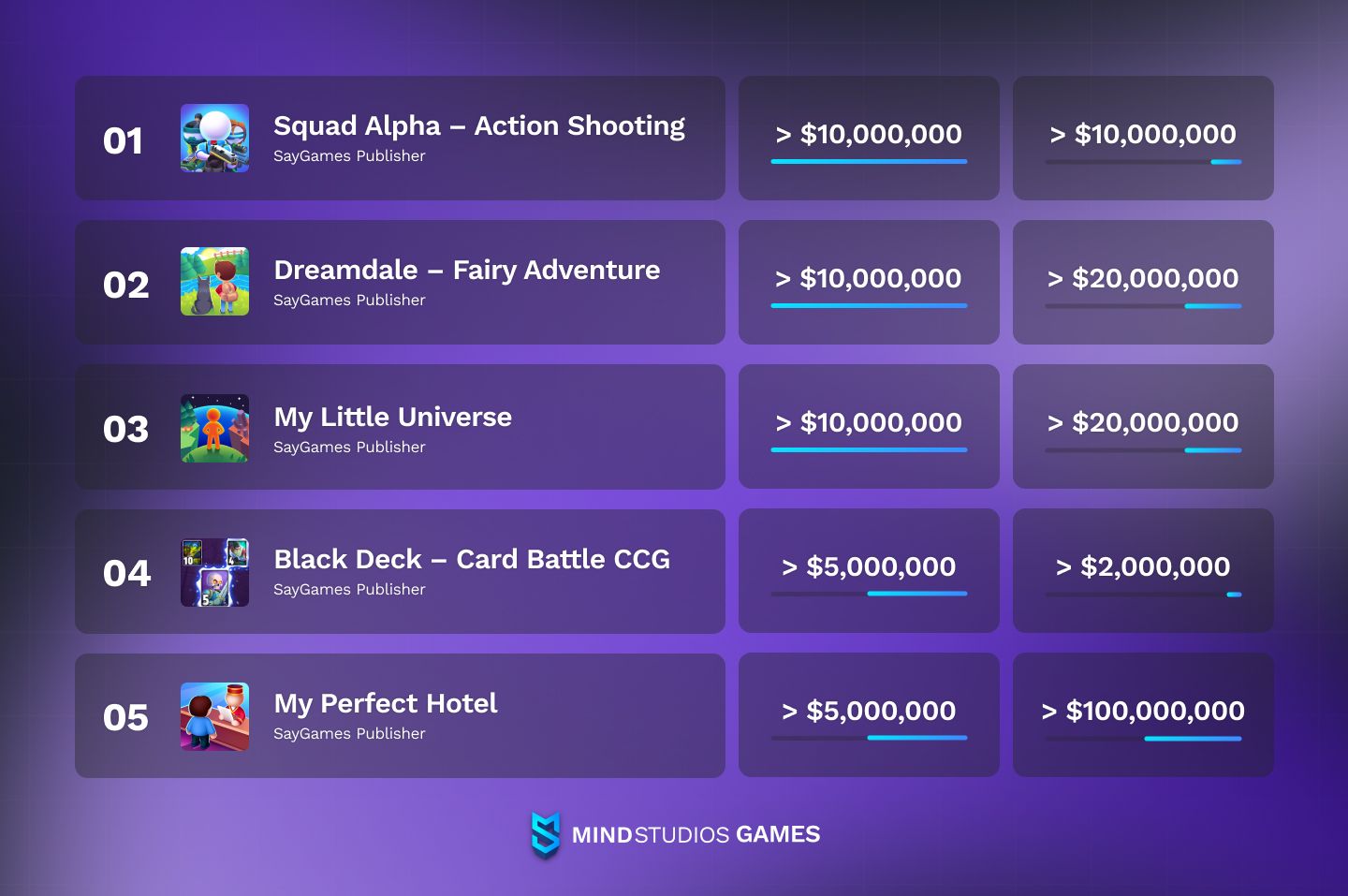
Idle arcade game development
Now that we’ve looked at the parts that make an arcade idle game fun through an example of a popular game, let us talk about the mundane but important — the building blocks of mobile game development.
Since the genre’s inception, we’ve embarked on an arcade idle game development trip over a dozen times. We’ve built games for our outsourcing clients and as our own products. In particular, we’ve been experimenting with different things in our arcade idle titles — the My Shop series — creating different settings, tweaking mechanics, and fine-tuning monetization. And we’ve learned a lot.
How to make an idle game with an arcade twist to it? Here’s a list of things to focus on.
#1 The right development environment
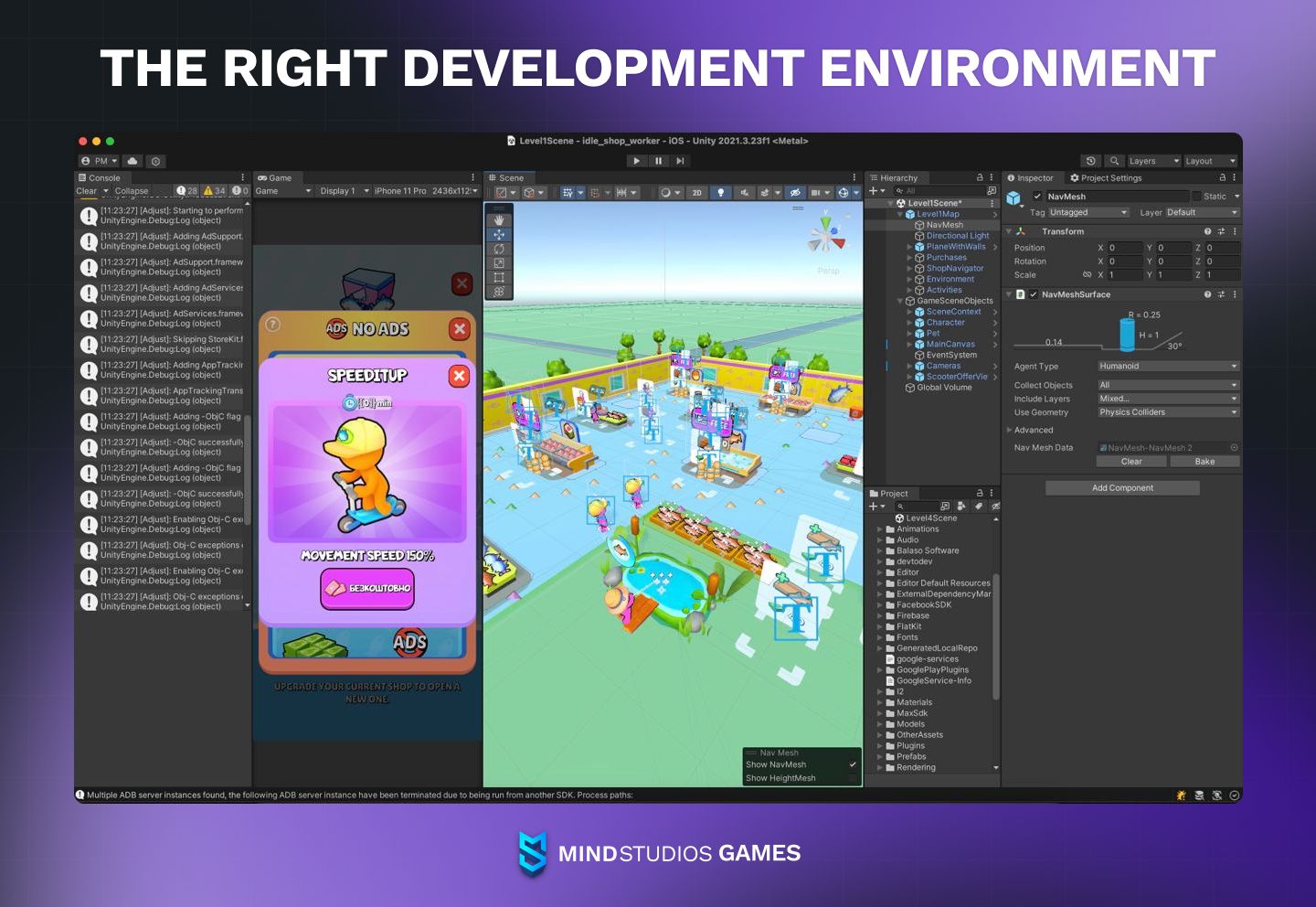
There are close to 50 engines suitable for mobile game development, here are just some of the most popular ones:
- Unity
- Unreal Engine
- Godot
- Cocos2d-x
- Amazon Lumberyard
- Phaser
Each engine has strong and weak points, they all have different pricing policies, features, and application specifics. The choice is usually made depending on your game details, budget, and developers’ expertise.
We at Mind Studios Games are a Unity game development team. This was a decision we made early on in the team’s inception, and our main reasons were that Unity:
- Handles both 2D and 3D well
- Has flexible pricing model with a free option for small and indie teams
- Has the most convenient integration with monetization networks, which is crucial for mobile games in general and arcade idle specifically
- Is lightweight (an important factor for mobile game development)
- Has a huge and active community of developers
- Has a great asset store for any budget (including free assets)
Some famous games developed in Unity include Pokémon GO, Hearthstone, Axie Infinity, and Among Us.
#2 Key features and mechanics
Arcade idle game design is complex in its simplicity. In a nutshell, it’s a blend of idle progression systems and meta with arcades’ core loops and mechanics.
Here’s an example table for features and mechanics to implement in an idle arcade game:
| Key features for an idle arcade game | |
|---|---|
| Visual joystick for movement control | Whereas in traditional idle games, there’s typically no designated “main character”, idle arcade games do have an avatar of sorts — a character players move around. |
| Map | It can be an expanding explorable map, or it can be a renewable map for new levels — new floor in a hotel, new shops in a franchise, etc. A map that needs to be opened and explored creates a feeling that there’s an end goal somewhere (even if these games are usually endless). |
| Stacking mechanic | As characters move around the map, they will automatically collect resources they pass. Stacking mechanic looks pretty satisfying to players. |
| Idle resource aggregation | In arcade idles, players can move their avatar around to collect resources. However, to keep the games hyper-casual (and thus retain more players), this genre borrows the idle mechanic of resource aggregation in the background. Typically, it is done by way of “hiring” helpers and installing machines — same as in traditional idle games. |
| Upgrading mechanic | Here’s another element borrowed from traditional idle games. As players accumulate in-game currency, they can spend it to enhance or speed up their helpers and machines. This creates a feeling of achievement as the revenue will accumulate faster. |
| Meta layers | Meta layers are additional elements that aren’t essential for core gameplay but can widen the target audience and offer extra monetization opportunities. They come in many forms. For example, when you create an arcade idle game, you can add a bit of fighting for area or resources, a story to occasionally spruce up the action or give a sense of a goal, minigames with different mechanics to obtain different resources, etc. Your only limit is your imagination and your team’s skills. |
#3 Design
Design is important for any user-facing product. In a niche as competitive as mobile games and in a genre as simple as arcade idle, well-made UI and UX are in the top-3 things to pay attention to.
Typical for the hyper-casual games, graphics in arcade idle games are simplistic, the character often represented by a stickman or a low-poly 3D shape. Although it’s not unseen of, but typically, this genre of mobile games don’t require complex character design — it will only add to loading and rendering times. (As the market is growing, more titles will choose intricate graphics to help them stand out.) However, simplistic graphics don’t mean that there are no considerations at all when it comes to design.
As in any other app or game, the navigation must be easy to understand, and colors need to be pleasing. Since it’s an arcade, you’ll need to have animators optimize everything for a smooth and pleasant player experience.
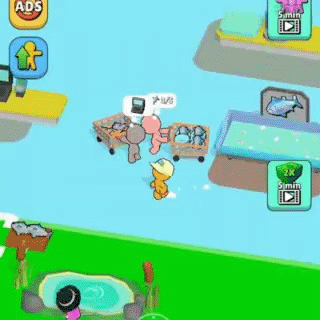
Most idle arcade games employ colorful schemes so that players can easily differentiate between simplistically rendered areas and objects. It’s not unusual to see brightly colored “skin” used for the avatar and hired helpers, whereas resources and game objects like buildings and machines are done in more realistic shades for recognizability.
Overall, you’ll need to allocate ample attention and time for the UI/UX designer to create visuals that will not fall short when compared to a multitude of other similar games on the app stores.
#4 Monetization strategy
Monetization in games is another point of ever-increasing significance, and you’ll need to think about it as early as at the stage of your arcade idle game design.
As mentioned above, idle arcade games mostly employ the blend of monetization models from both idle and hyper-casual games; however, thanks to the arcade element, they can also use monetization options usually not seen in either hyper-casual or idle titles.
| Monetization strategies for idle arcade games | |
|---|---|
| Interstitials | This is the type of ads that turn on automatically at some points in the game. Typically, they aren’t rewarded, but rather a price players pay for a free-to-play game. Many idle arcade games turn to frequent interstitials since it’s a way to monetize all players, even those who refuse rewarded ads. However, if you do decide to use interstitials in your monetization strategy, do keep in mind that this needs to be done in moderation — an overabundance of this type of ads angers many players. |
| Rewarded videos | To balance off the interstitials (or instead of them if that’s enough for your game), rewarded ads are ads players watch willingly to get some sort of reward. In hyper-casual and idle games, it’s usually some kind of boost or extra in-game currency. |
| In-app purchases | The most straightforward monetization model is to offer players IAPs — items or boosters for real-life currency. Typically, in idle games, IAPs are cheap, so making a purchase decision is easy for players. By having more players make small purchases, idle arcade games can even exceed in revenue titles in other genres that have higher average prices. The removal of interstitial ads is one of the most popular IAPs in arcade idles, by the way. |
| Subscriptions | This is the monetization model made possible in arcade idles thanks to the arcade elements. In typical hyper-casual and idle games, subscription as monetization is rarely viable due to short gaming sessions and short user lifetime. There’s simply not enough incentive for players to buy subscriptions. Longer sessions in the idle arcade genre create that incentive. You can offer subscribers to remove interstitials, offer permanent speed or production boosters, and daily rewards of produce/income. |
It’s entirely possible for arcade idles to combine two, three, or even all four of the monetization options described above. It will require careful balancing and working out proper prices and frequency of ads, but the result might exceed your expectations.
#5 Game balance and progression
In idle games, the strategic element in resource aggregation and spending is at the core, it’s what adds a challenge to an otherwise weird concept of no-play playing. In idle arcades, however, the choice of what to spend on is less significant and, hence, doesn’t need to be as challenging. It sort of serves as a meta challenge rather than the core one.
At the same time, idle arcade games do borrow their progression and balancing from idle games, not from hyper-casual or arcade ones. And it’s not an easy task.
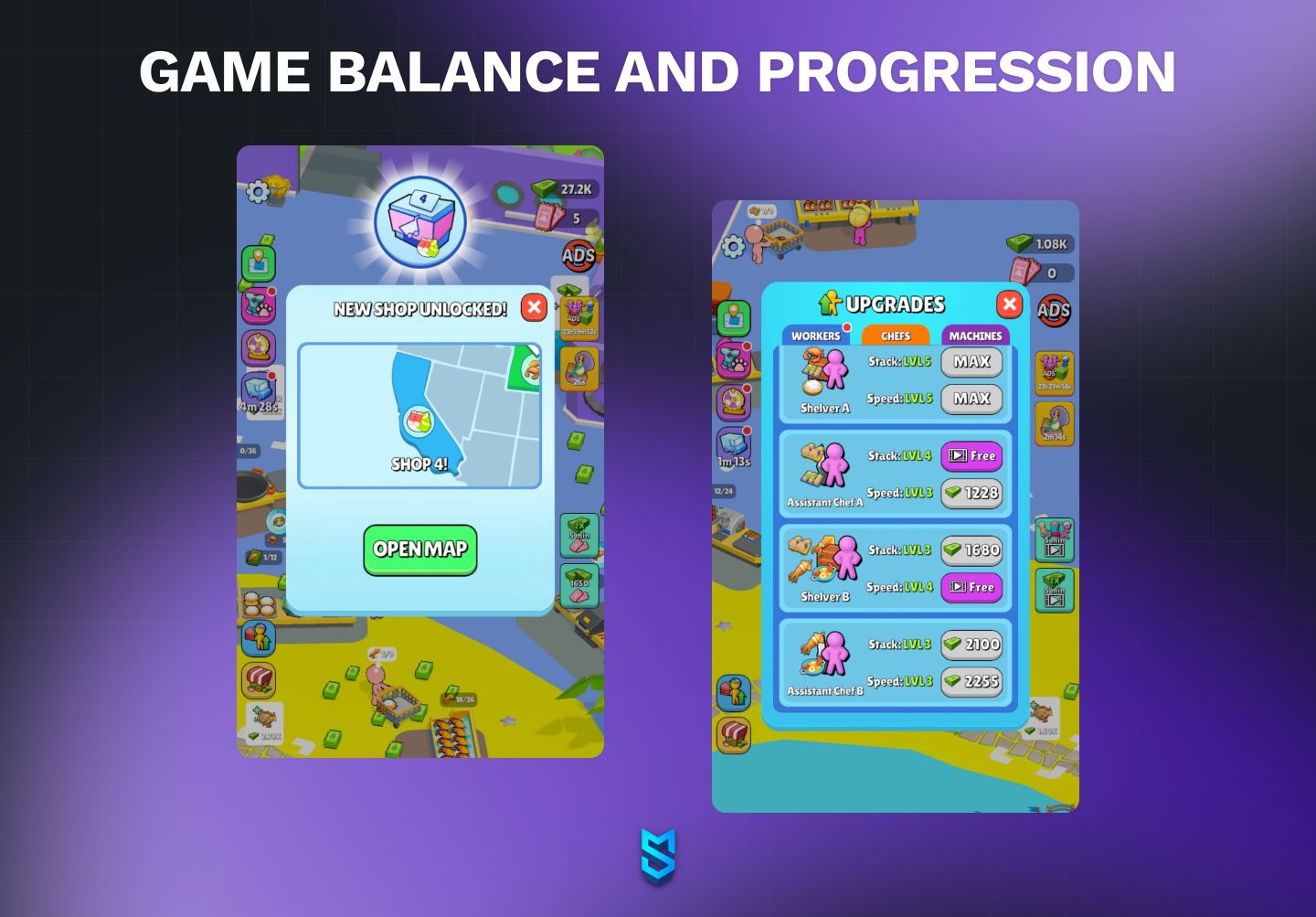
Your game designers will need to work out the most efficient level completion parameters to keep players interested. The prices of upgrades and boosters will also need careful consideration. The speed and maximum amount of passive income accumulation to make people return but not be irritated with push notifications for “Your store is full of cash”.
At Mind Studios Games, we’ve been in the idle game development market for a while, and we’ve built quite a few arcade idle games as well. All the projects we’ve completed in the genre prompted us to create a custom engine for idle income calculation. It helps with level design and game balancing, allowing us to create idle and idle arcade games faster.
Mind Studios Games as your game development partner
Idle arcade games are the genre we at Mind Studios Games have ample experience with. In fact, we can say it’s our focus industry at the moment. In the last several years, we’ve worked on about a dozen of projects in the arcade idle niche. Here are just the latest ones.
My Fish Shop: Idle Tycoon Game
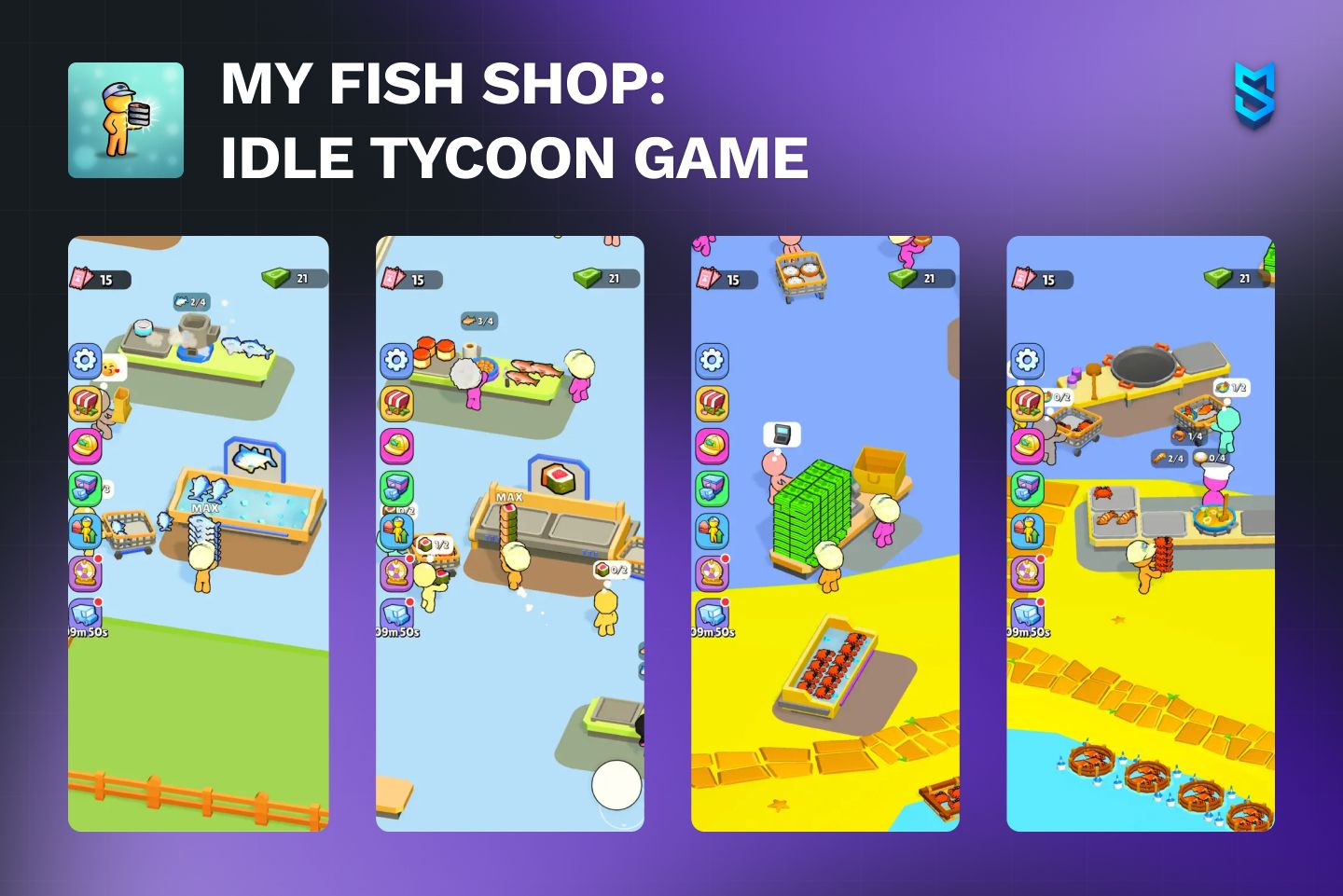
A fairly classic take on the tycoon genre with an arcade idle mechanic: players get to manage a fish shop and develop it into a big network of markets. Starting with a simple collection of fish for sale, users will expand their shop to make and sell canned fish, sushi, caviar, fish steaks, and more.
Island Survival: Idle Builder
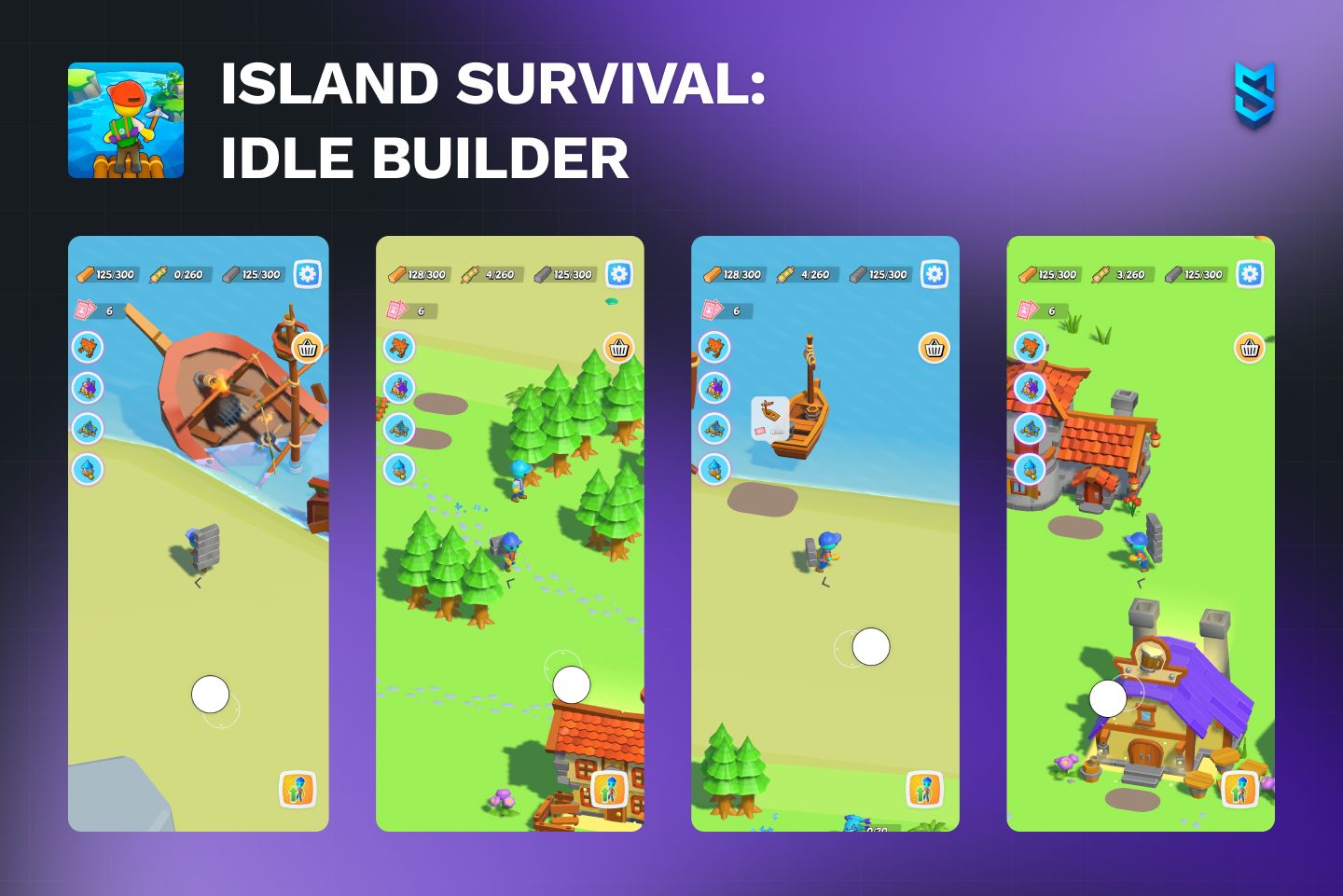
For a bit more of an adventure, here’s an arcade idle game about people getting stranded on an island after a shipwreck. You’ll have to collect building materials and food to survive, and explore the map as you do that.
My Candy Shop: Idle Cooking
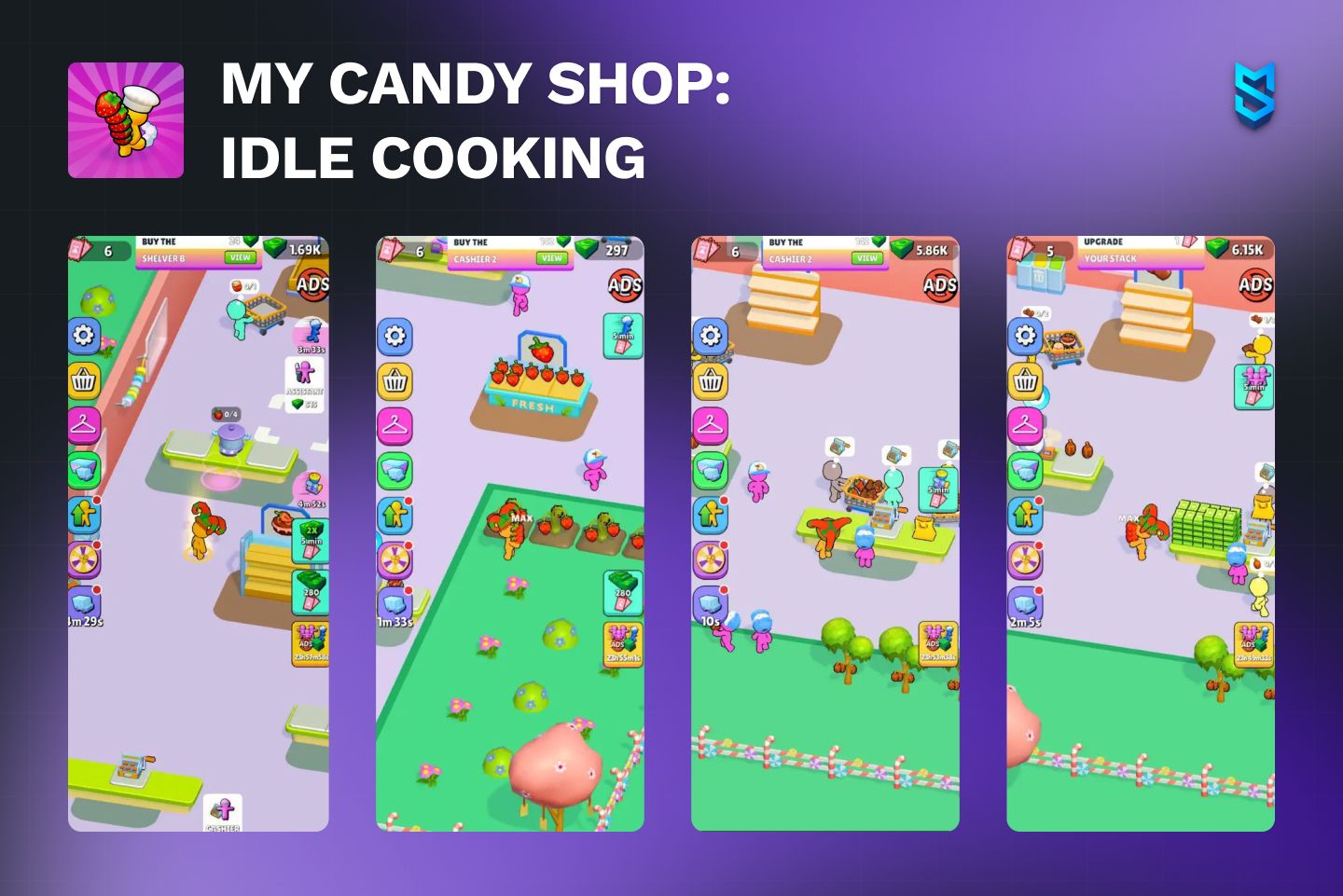
A game in our “My Shop” series. It’s similar to My Fish Shop but instead of a fish market, players will manage a store making and selling all kinds of sweets and pastry.
Download: iOS
My Craft Mart: Idle Mini Shop
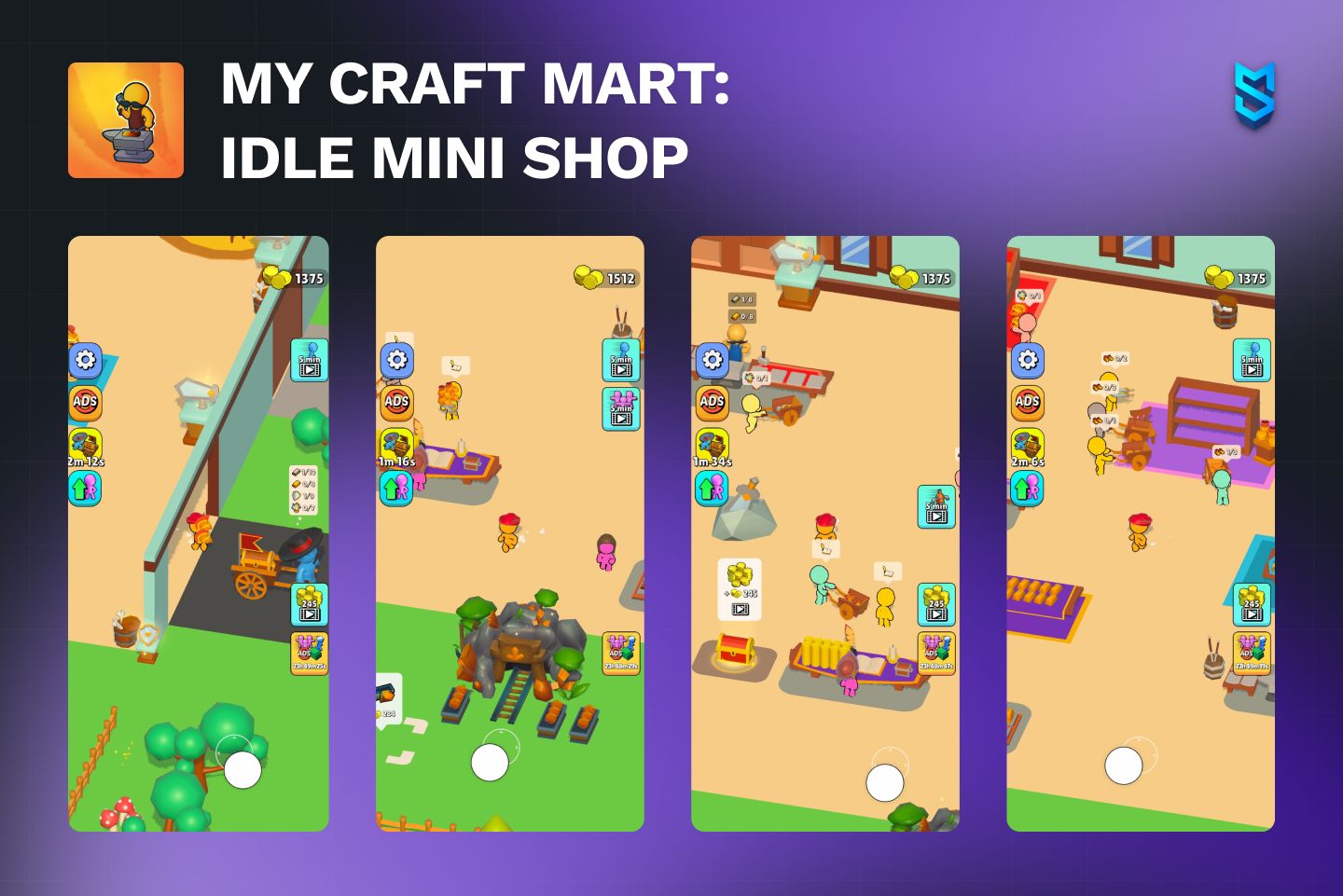
Another game in the “My Shop” series, this one set in a somewhat historical setting. You’ll be collecting ores and creating medieval armor and weapons: swords, shields, and more.
Conclusion
Idle arcade games emerged in a time when people had a lot of time on their hands, being on lockdown and all. However, as seen recently, the genre is here to stay — despite players being back to school and work, games like My Perfect Hotel and Burger, Please! continue to top charts.
A genre that boasts both high retention and long playing sessions is something every game developer dreams of, as these two factors mean high ROI.
Moreover, developing an idle arcade game can be both fast and relatively cheap, compared to other genres with similar revenue. By hiring an experienced team, you can launch the first release of an idle arcade in under five months, spending as little as $35,000. If you’re interested and have an idea for a mobile game, hit us up via our contact form, and we’ll get back to you to schedule a free consultation.

